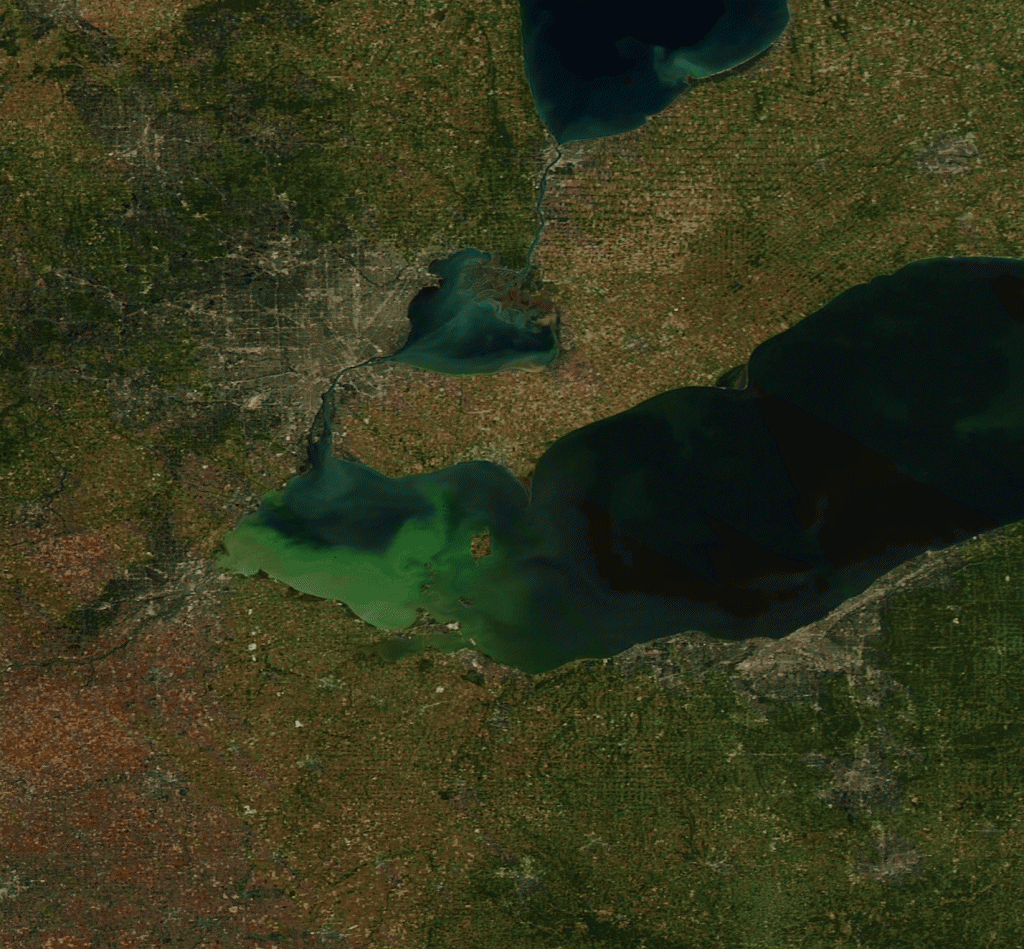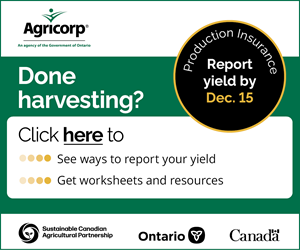Protecting Lake Erie
PREPARING FOR NUTRIENT REDUCTION TARGETS

IT WAS FORTY-FOUR years ago in 1972 when the Great Lakes Water Quality Agreement (GLWQA) came into being. It was all about the Great Lakes — a commitment by the governments of Canada and the United States to develop programs, technologies, and other measures to better understand the overall ecosystem, and to restore and protect water quality and ecosystem health.
“For over forty years, the GLWQA has served as a guidepost for the binational management of the Great Lakes,” states Environment Canada on its website, “and, as a model of international cooperation for the protection of water quality in other large lakes of the world.” Then, as now, the Agreement would be implemented in consultation and cooperation with other levels of government, First Nations and Métis, businesses, non-governmental entities, and the public.
The original GLWQA focused primarily on reducing algae, and it included a coordinated approach to limiting phosphorus inputs as they were believed to be the key to controlling excessive algal growth. This approach worked. Phosphorus levels in the Great Lakes declined significantly during the 1970s and 1980s. It was called “an unprecedented success in achieving environmental results and demonstrating the value of binational cooperation.”
In 1978, changes to the GLWQA gave it a broadened outlook by taking the whole Great Lakes ecosystem into account. Five years later, an amendment further limited phosphorus discharges and outlined commitments for greater future reductions. In 1987, both countries committed to developing and implementing management plans for each lake and cleanup of certain areas.
ALGAE BLOOMS
In 2011, Lake Erie experienced its largest algal bloom in history, and interest in the Agreement again surged. “In 2012, the legislation was amended to include timelines for phosphorous reduction targets in Lake Erie,” says Debra Conlon, manager of government relations, Grain Farmers of Ontario. “Since then, the government has consulted with stakeholders and recently announced a 40% reduction target under 2008 levels.” The action plan will go out for consultation this year and will be implemented in 2018.
Lake Erie is the primary focus of attention within the amended GLWQA because it is currently having the most significant algal problems, according to Environment Canada. “It is [also] the shallowest and most biologically-productive of all the Great Lakes, leading it to be highly sensitive to changes in nutrient levels and changes in the food web.” However, algal blooms are a big problem in areas of Lake Huron, Lake Ontario, and Lake Michigan as well.
Many algae varieties threaten human and wildlife health, and can also clog water intakes, increase water treatment costs, and disrupt fisheries, tourism, and recreation. According to Environment Canada, the causes of the resurgence in algae growth are not fully understood. They include increased temperatures, increased penetration of light, and changes in phosphorus discharges and travel within the lakes. Of the various factors which influence algae growth in the Great Lakes, it is the amount of phosphorus that can be controlled. However, part of the challenge is that phosphorus management approaches used in the past to reduce discharge from sewage treatment plants and urban, rural, and agricultural runoff may no longer be adequate or effective in all cases, says Environment Canada.
NEW TARGETS
The good news is that at the same time action plans and timelines for phosphorus reduction are still being developed, there has already been great progress in moving forward with programs to reduce phosphorus discharge from urban, rural, industrial, and agricultural sources. In addition, the identification of watersheds that contribute significantly to local algae development has begun, as has research, monitoring, and modeling to make sure nutrient management is effective.
The main phosphorus loss-reduction program within the global agricultural arena is called the 4R Nutrient Stewardship Strategy. It’s currently being adapted and implemented for the farm level in Ontario by Grain Farmers of Ontario. Conlon explains that Grain Farmers of Ontario is also working with the Ontario Ministry of Agriculture, Food and Rural Affairs and the provincial Ministry of the Environment and Climate Change on an action plan to address the reduction targets to come.
“The 4R Nutrient Stewardship Strategy program is a positive step in overall phosphorous management from an agricultural perspective. Grain Farmers of Ontario is working hard to implement the program and make it as straightforward as possible for farmers to track and trim phosphorus use,” Conlon says. “Farmers are excellent stewards of the land and want to do their part to safeguard Great Lakes water quality. This program will help them get even better at nutrient management.”
For more information, visit http://binational.net/ glwqa-aqegl/.
THE GEOGRAPHY OF THE LAKE ERIE WATERSHED
- Lake Erie is the shallowest and smallest of the Great Lakes
- Lake Erie has an average depth of 19 meters. It’s broken down into three distinct basins: The Western Basin (average depth of only 7.4 meters), the Central Basin (18.5 meters), and the Eastern Basin (25 meters)
- 63 per cent of Lake Erie’s watershed area is used for agriculture
- Almost 40 per cent of the Canadian shoreline is residential use (45 per cent for the U.S. shoreline). Agriculture use is 21 per cent of the Canadian shoreline (45 per cent U.S.) and the remaining shoreline is used for commercial purposes
- One of the most-populated Great Lakes watersheds, home to 11.6 million people
- Wheatley is home to the largest fresh water fishery in the world
- Tourism is a large sector to Lake Erie (eg. parks, beaches, Pelee Island)
source: http://www.ijc.org/en_/leep/report
GREAT LAKES WATER QUALITY AGREEMENT
The Waters of the Great Lakes should:
- Be a source of safe, high-quality drinking water
- Allow for swimming/recreational use, unrestricted by environmental quality concerns
- Allow for human consumption of fish and wildlife unrestricted by concerns due to harmful pollutants
- Be free from pollutants in quantities or concentrations that could be harmful to human health, wildlife or organisms, through direct/ indirect exposure through the food chain
- Support healthy and productive wetlands and other habitats to sustain resilient populations of native species
- Be free from nutrients that directly or indirectly enter the water as a result of human activity, in amounts that promote growth of algae and cyanobacteria that interfere with aquatic ecosystem health, or human use of the ecosystem
- Be free from the introduction and spread of aquatic invasive species and free from the introduction and spread of terrestrial invasive species that adversely impact the quality of the Waters of the Great Lakes
- Be free from the harmful impacts of contaminated groundwater
- Be free from other substances, materials or conditions that may negatively impact the chemical, physical or biological integrity of the Waters of the Great Lakes •






















